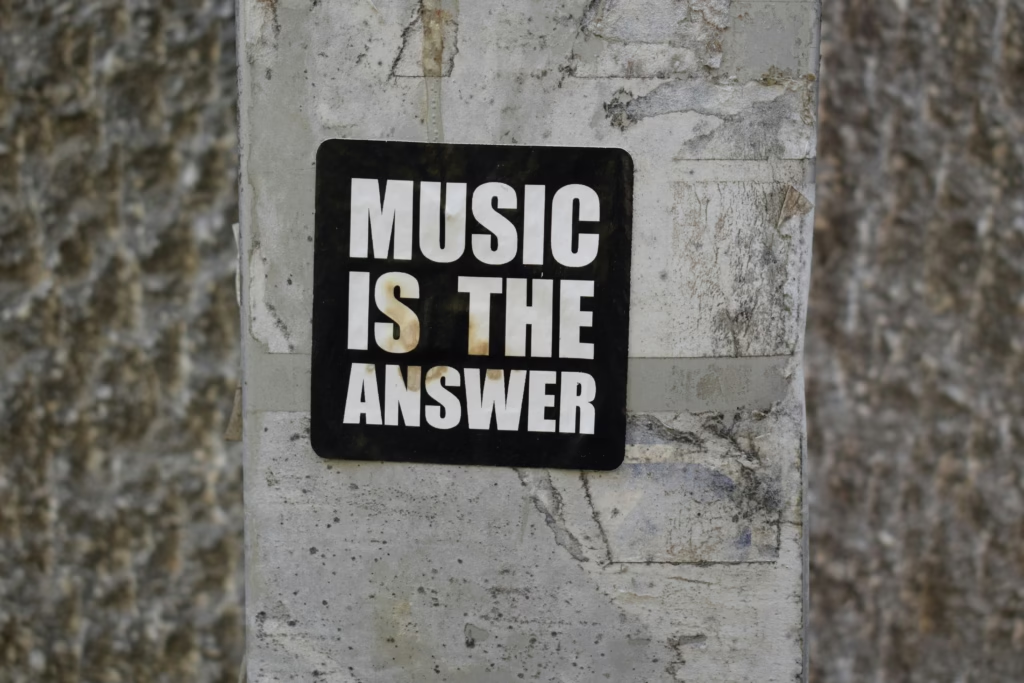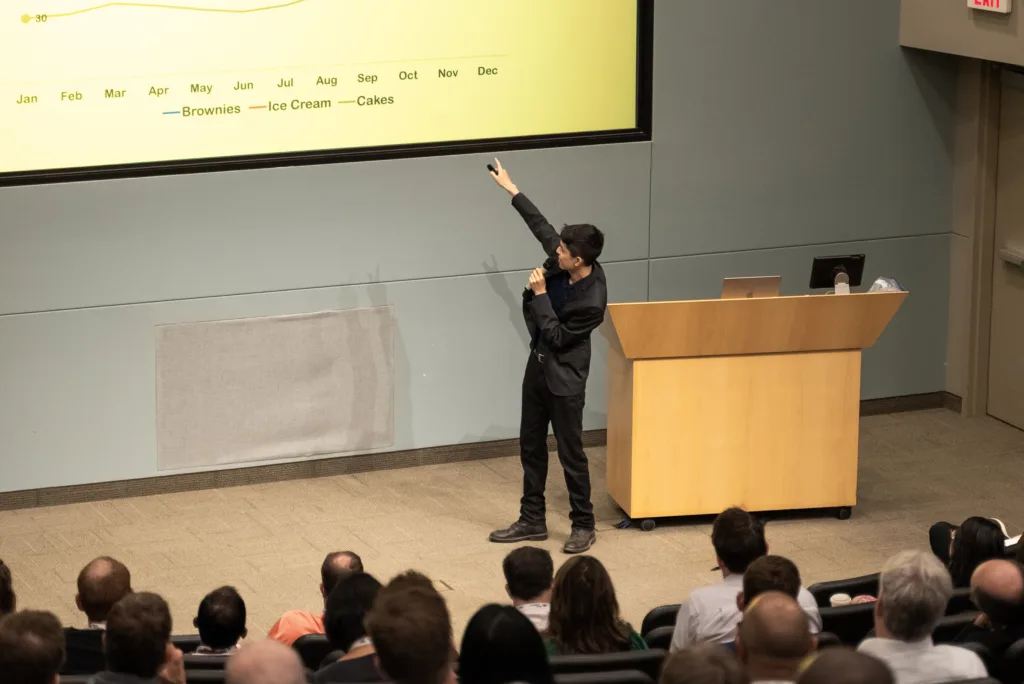“Just like notes are the building blocks of music, data is the building block of decisions” – “How Music Can Make Your Data Sing”
While often seen as polar opposites, data and music offer complementary perspectives that can enhance the success of any analytical career. Drawing from my experience in both industries, I’ve identified a data-based perspective is essential for executing solutions, gathering the right information, and building impact for products. A music-based perspective, on the other hand, is essential for identifying problems, presenting insight, and building impact for people. This article highlights the three essential “musical” soft skills you need, whether you’re a student just starting out, an entry-level analyst, or a seasoned professional.
- Understand the Pain Point: Following Orders vs Asking Questions
- Understand Your Audience: Inductive vs Deductive Mindsets
- Understand How to Engage Attention: Information vs Emotion
Understand the Pain Point: Following Orders vs Asking Questions
One of our greatest strengths and weaknesses as analytical professionals is a desire to make solutions. We have great attention to detail. We get things done. But if we don’t properly identify the problem, our work is practically useless.
For one of my major projects as a senior analyst, I was brought in late, after several meetings had already taken place with stakeholders. The tech lead caught me up with these requirements:
→ “Write some SQL code to automate this analysis. Our stakeholders don’t want to touch anything. They just want the data analyzed and populated in this report”
I said, “Sure will do”, and after a week came back with the most in-depth procedure I’d ever written. Unfortunately, our stakeholders hated it:
→ “We need a SQL-agnostic solution. Since we’re migrating away from our current database, this code won’t work…”
All that effort was wasted on useless code…because I had blindly followed orders.
A few weeks later, a new set of requirements hit my desk. But I took a different approach. Stakeholders said:
→ “We want a table on this dashboard that shows procedures by execution time”
I made sure to ask “why”:
→ “Why do you want a table that shows that kind of data?”
They said:
→ “We want to see procedures that take the longest.”
It was tempting to stop there, but I kept going.
→ “Why do you want to see that?”
They said:
→ “We want to know what procedures had problems.”
Aha! There’s the pain point that needs solving. But is their solution valid?
I said:
→ “Based on my analysis, procedures might take longer because they had more data to process, not because they had problems. If you want to identify procedures with problems, we can investigate the following alternative…”
Turned out I had saved a whole lot of time, effort, and resources by asking two extra questions. And in the end they got just what they needed, even though it wasn’t what they initially wanted.
Lesson learned:
As analytical professionals, we are not just order-takers. We are problem-solvers. The people we work for know what they need, but not often how to articulate it technically. As the technical experts, we must feel confident pushing back against requests and asking questions, asking “why” until we truly understand what the pain points are.
That’s how we solve problems, instead of creating more of them.
Understand Your Audience: Inductive vs Deductive Mindsets
The other major challenge I’ve seen in industry is ineffective communication. Once you’ve listened and properly identified the problem, it is absolutely crucial that you are concise in the way you relay information.
One company hired me, for example, to solve these issues on their data team. Their team’s slides had too much text and too many numbers, causing eyes to glaze over in the board room. Executives were getting frustrated asking for clarification over and over again because all this great data was being presented in an excessively complicated way.
The issue here was an inductive mindset:
- This mindset is characterized by attention to detail and adherence to methodology, gradually observing and unveiling all the evidence until you get to a conclusion.
- While an excellent approach for executing technical work, as it ensures precision and lack of bias, this mindset is unfortunately less well-suited for presentations.
For presentations, we often need to flip the script with a deductive mindset:
- Present the conclusion first, then evidence to back it up.
- Especially for non-technical audiences interested in the conclusion rather than the process, this ensures they are with you from the beginning and more willing to hear details later.
I held a training workshop for the data team, highlighting the power of delivering presentations the deductive way. With this mindset shift, the team significantly improved their data communication to stakeholders and leadership. They got to the bottom line takeaway fast and made each slide elegantly simple with clear titles and minimal text.
Lesson learned:
While an inductive mindset is ideal for executing our data work, a deductive mindset may be more optimal for presenting it to non-technical audiences. Because ultimately, communication is not about us and what we know and what we like. It’s about addressing what our audience’s pain points and priorities are, as efficiently as possible.
Understand How to Engage Attention: Information vs Emotion
Last but not least, once you’ve understood your audience’s pain and concisely communicated your point, you must structure the rest of your communication to hold their attention. This requires another key mindset shift: from information to emotion.
As analytical professionals we are often trained to eschew emotion. Because it’s subjective, biased, and “messy”. We prefer to focus on the pure data and information, let our work “speak for itself”.
Unfortunately, that is insufficient.
There are two modes of the brain we use to understand the world:
- A slow, analytical mode based on logic/data
- And a fast, intuitive mode based on emotion/instinct.
If we only focus on showing information, we force our audience to constantly, laboriously rationalize, leading to disengagement. By failing to engage the other, faster, emotional mode of their brain, they will cease to pay attention and be unlikely to follow our recommendations.
This gap was most apparent when I was working with a client on their data presentation. They had conducted survey research about an audience’s event experience, and were eager to show their stakeholders all the data they had found.
On each slide, we reframed the data through both those lenses:
One chart, for example, originally showed just the data: how audiences felt during one portion of the event. To convert that to insight:
- We emphasized what part was most important: what audience members were dissatisfied.
- We highlighted that data and boxed it on the slide in red so it would stand out.
- We pulled out a quote from a few audience members to tell their story – what was the exact reason they were dissatisfied? What would they have liked to see instead?
For other slides talking about how the research itself was conducted step-by-step, we took that out and moved it to the appendix. Of course, it is important, but not the stakeholders’ priority. We instead focused step-by-step on what the audience could do with this data: resolve the audience’s dissatisfaction and update the event to make it better the next time.
Lesson learned:
Information is fundamental, just like technical skills are. But if you want your audience to do something about the information you give them, you need to connect to what they care about – emotionally. Get them excited about things going well that they should keep doing. Relate to their frustration about things going badly and how they can turn them around.
Information and data lead to knowledge, but emotions and insights are what lead to action.
How Music Can Make Your Data Sing
When I left my music career behind to transition into data, I was afraid no hiring manager would look at me. I didn’t have a “data” degree, or extensive years of experience doing technical work. However, what I did have was these three “musical” soft skills:
- Rather than just doing technical work, engage with people and ask the right questions
- Rather than just talking about the technical work you did, highlight the conclusions people care about
- Rather than just uncovering information from your technical work, focus on how people should feel about its insights
At the end of the day, data is just like notes on a piano. Unorganized and unemotional, it will sound like noise. But if you center your technical work on people – and turn those notes into music – that’s how you form relationships, create connection, build trust, and let your work have the full impact it deserves in your company.
This article was originally published in OR/MS Tomorrow on July 27, 2025
Check out these related articles on how to develop strong communication skills as a data professional:
Speaking Skills:
- How to Overcome Fear of Public Speaking
- What to Say When You Don’t Know the Answer: 3 Techniques
- 3 Steps to Disagree Respectfully at Work
Slide Design:
How to Make Your Slide’s Message Pop in 2 Simple Steps



